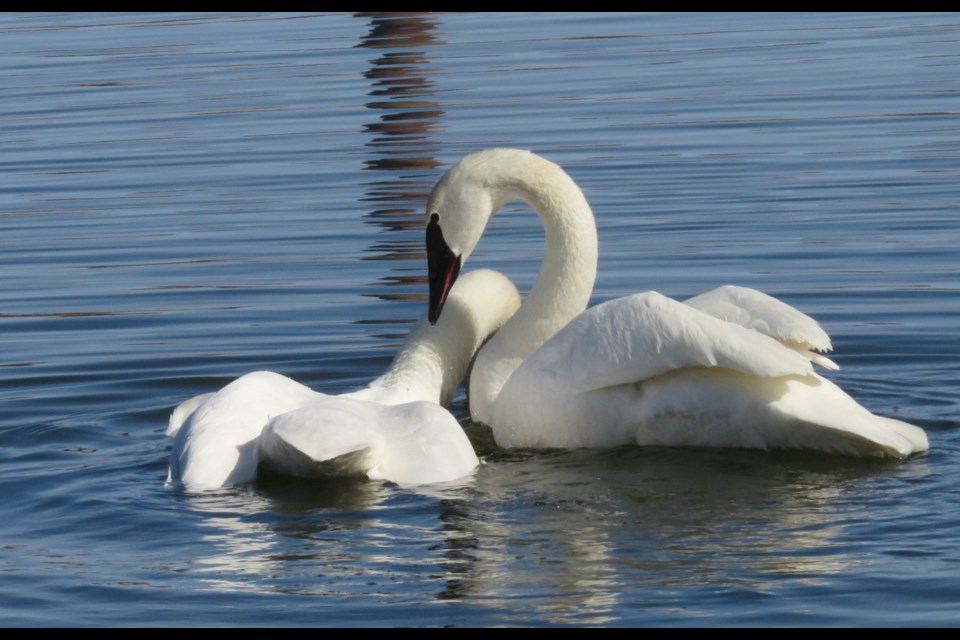Greater Sudbury is a unique Northern city.
In winter, when the cold winds blow and the lakes freeze solid for most snow machines, there is always a small area that has open water. The area stays open all winter in sections of Junction Creek.
What this means is that some birds will just not migrate or move south like they are supposed to. In the Junction Creek system during the Christmas bird count, there were 857 mallards and 81 American black ducks counted, give or take a few in 2016. These birds are subsidized by human winter feeders. People bring grain to certain locations along the system, and this, in part, sustains some of the waterfowl population.
On a larger note, however, Greater Sudbury also has a small population of trumpeter swans that over winter in the area. These large white birds have an all-black beak and a robust call that gives the species its name. They were first introduced into the area in 1996 and a provincewide improvement in the breeding population has helped to keep these birds on a birder’s checklist, and a breeding bird in Sudbury.
Back to the exciting times!
Last year, two trumpeter swans set up homemaking and laid eggs within city limits. The female sat on the eggs for a period longer than normal — 32 days. The nest was watched carefully with great expectations. Sadly the eggs did not hatch at the allotted time and the nest was abandoned.
The parent birds, however, are at it again. The male is called Bigfoot and can be identified by its behavioural traits and a leg band. From the band number, we know that Bigfoot is over 18 years old. The female is called Partner and she keeps Bigfoot hopping. She is not banded. Courtship behaviour has been going on since March, and breeding is occurring daily during the early days in April.
Large water birds like the trumpeter swan and the Canada goose require a longer period of time to be successful in procreating. This is why they start early and have nests on the ground while there is still snow on the ground. The waterways have to be fairly open so that foraging and nest protection is secure.
Long incubation and a longer development time for the young to reach independence do not leave much time to start again if things go wrong. Because they are larger birds, they also tend to live longer than their smaller duck relatives, so the chances of rearing young successfully over time are there. A brood of trumpeter swans from one nest averages around six, but the developing cygnets have many challenges before they reach the flying stage. In the Sudbury area, the odd family that visits our parks tend to have two young at the “teenage” years.
This year, we are wishing Bigfoot and Partner every success and hope to see a couple of young swans in late August. There are two or three other pairs that may nest in more outlying areas, so keep your eyes open but keep your distance so that the swans are not disturbed.
Chris Blomme is an executive member of the Sudbury Ornithological Society and works with animals at Laurentian University. Have a question for Chris? Send it to [email protected].
